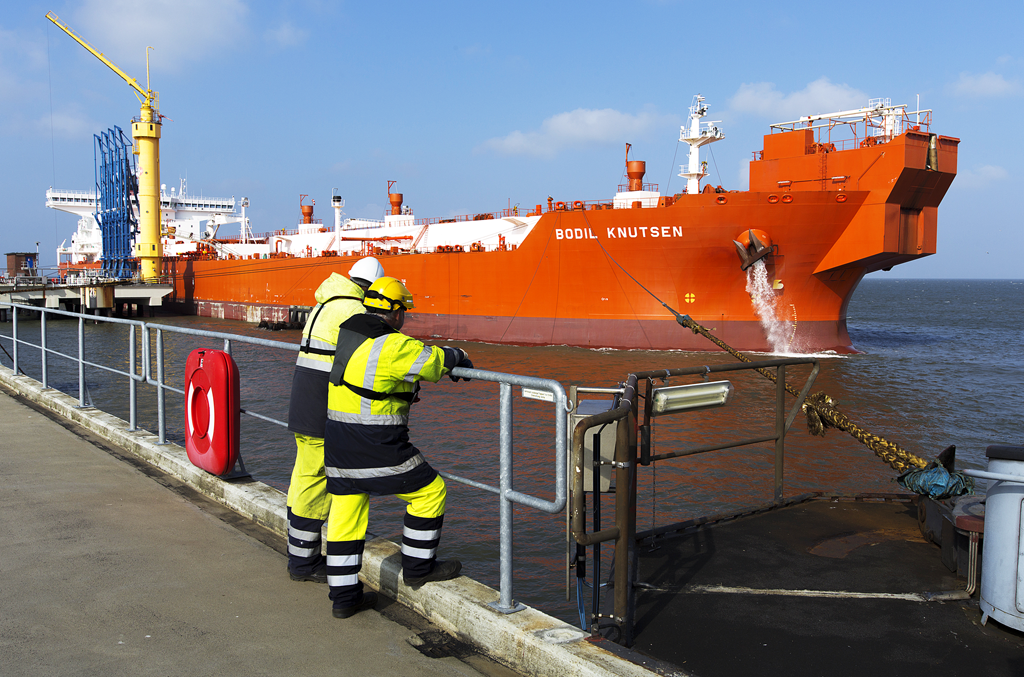Tanker pier
Following the oil’s route
Crude oil that arrives at NWO by tanker begins its journey through our facilities at the tanker pier. This can be reached by tankers from the sea and via a 670 m access bridge from the shore. The tanker pier itself is 1207 m long and is close to the shipping channel, so that the tankers can moor at it easily and unload their cargo. For the transfer of crude oil there are extremely efficient state-of-the-art delivery platforms on it called jetties. These have proven to possess a high standard of environmental safety and guarantee short periods of mooring for the tankers while we operate day and night, seven days a week.
Altogether there are three jetties with a total transfer capacity (turnover rate) of 40,000 cubic metres per hour. This capacity is divided between two jetties using which 12,000 m³/h can be transferred and one large jetty, which can deliver the crude oil at a rate of 16,000 m³/h.
The tankers pump the oil ashore using the ship’s on-board pumps via the jetties with their marine loading arms and into NWO’s storage tanks, meaning that the actual rate of delivery depends on the capacity of the respective tanker’s pumps.
As a rule, the bigger a tanker is, the higher the capacity of its pumps, meaning that the average unloading time of around 24 hours is hardly ever exceeded, even in the case of large tankers. Not only the rate of unloading but also the draught possible and thus the size of ship vary from jetty to jetty. Ships with a carrying capacity of up to 130,000 tonnes and with a draught of up to 15.4 m can moor at the two smaller ones. At the larger jetty, on the other hand, ships with a draught of 20 m and a carrying capacity of 260,000 tonnes can processed, as can also bigger, partially-loaded ships, if their draught allows the granting of special permission.

Stefan Tornow
Operations Director
»With the economical use of energy
and a maximum of innovation
we ensure a sustainable and
safe operation of our systems.«
